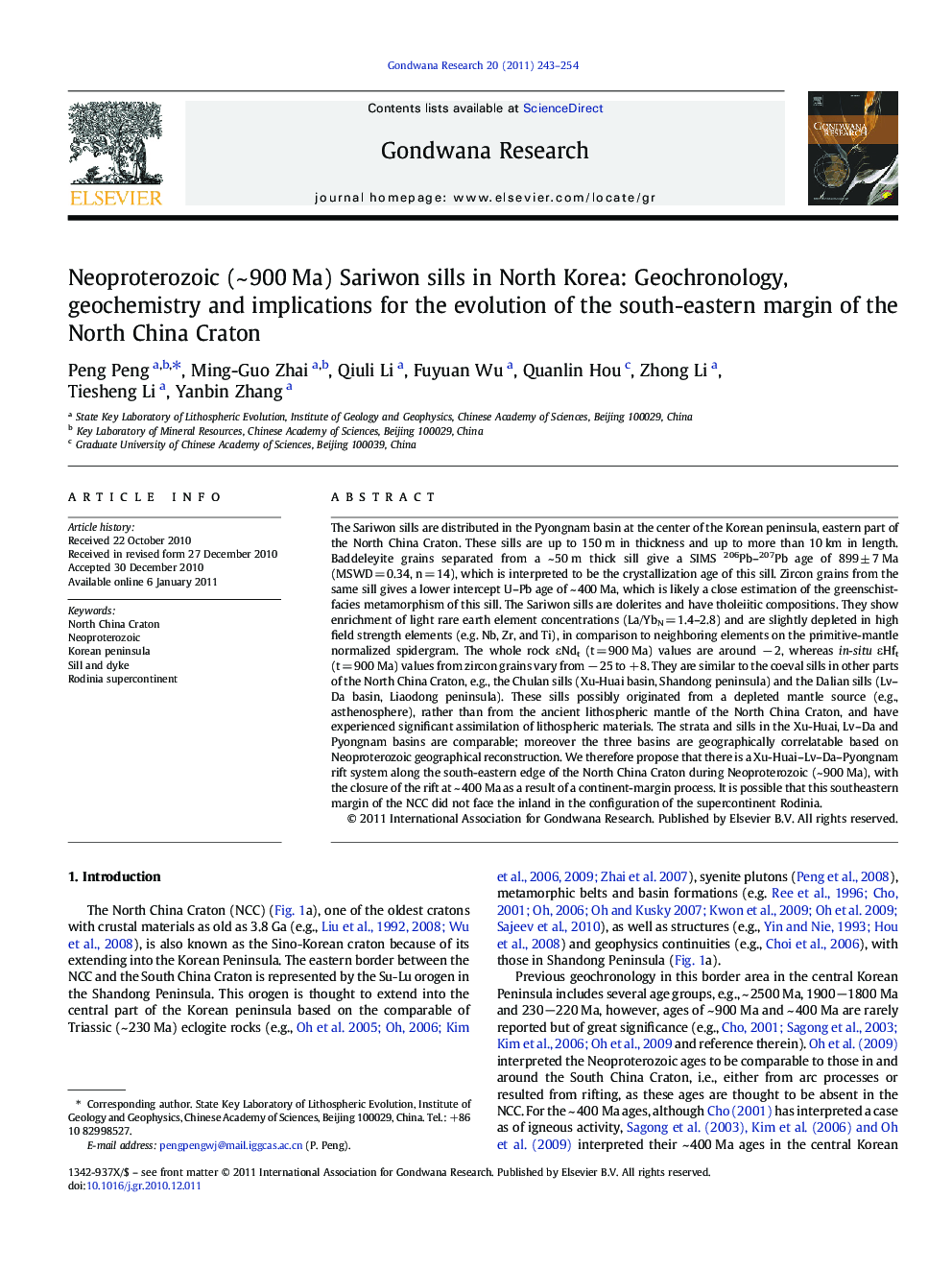| کد مقاله | کد نشریه | سال انتشار | مقاله انگلیسی | نسخه تمام متن |
|---|---|---|---|---|
| 4726955 | 1356354 | 2011 | 12 صفحه PDF | دانلود رایگان |

The Sariwon sills are distributed in the Pyongnam basin at the center of the Korean peninsula, eastern part of the North China Craton. These sills are up to 150 m in thickness and up to more than 10 km in length. Baddeleyite grains separated from a ~ 50 m thick sill give a SIMS 206Pb–207Pb age of 899 ± 7 Ma (MSWD = 0.34, n = 14), which is interpreted to be the crystallization age of this sill. Zircon grains from the same sill gives a lower intercept U–Pb age of ~ 400 Ma, which is likely a close estimation of the greenschist-facies metamorphism of this sill. The Sariwon sills are dolerites and have tholeiitic compositions. They show enrichment of light rare earth element concentrations (La/YbN = 1.4–2.8) and are slightly depleted in high field strength elements (e.g. Nb, Zr, and Ti), in comparison to neighboring elements on the primitive-mantle normalized spidergram. The whole rock εNdt (t = 900 Ma) values are around − 2, whereas in-situ εHft (t = 900 Ma) values from zircon grains vary from − 25 to + 8. They are similar to the coeval sills in other parts of the North China Craton, e.g., the Chulan sills (Xu-Huai basin, Shandong peninsula) and the Dalian sills (Lv–Da basin, Liaodong peninsula). These sills possibly originated from a depleted mantle source (e.g., asthenosphere), rather than from the ancient lithospheric mantle of the North China Craton, and have experienced significant assimilation of lithospheric materials. The strata and sills in the Xu-Huai, Lv–Da and Pyongnam basins are comparable; moreover the three basins are geographically correlatable based on Neoproterozoic geographical reconstruction. We therefore propose that there is a Xu-Huai–Lv–Da–Pyongnam rift system along the south-eastern edge of the North China Craton during Neoproterozoic (~ 900 Ma), with the closure of the rift at ~ 400 Ma as a result of a continent-margin process. It is possible that this southeastern margin of the NCC did not face the inland in the configuration of the supercontinent Rodinia.
Graphical AbstractFigure optionsDownload as PowerPoint slideResearch Highlights
► A Sariwon sill from North Korea gives a baddeleyite age of 899 ± 7 Ma.
► Neoproterozoic rifting and mantle upwelling existed in the SE North China craton.
► The SE North China Craton was not a side facing the inland of the Rodinia.
Journal: Gondwana Research - Volume 20, Issue 1, July 2011, Pages 243–254